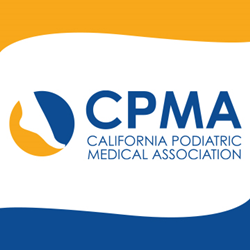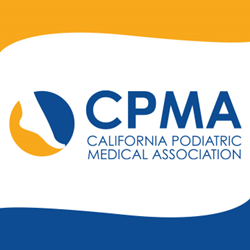
Your Feet Shouldn’t Hurt!
“Good foot health can help keep you on your feet.” California Podiatric Medical Association
SACRAMENTO, Calif. (PRWEB)
September 20, 2021
Every second of every day, an older adult (age 65+) suffers a fall in the U.S.— making falls the leading cause of injury and injury death in this age group (Centers for Disease Control and Prevention [CDC]).
“Common and costly, falls are preventable and do not have to be an inevitable part of aging,” says podiatric foot and ankle specialist Adam Howard, DPM. “Good foot health can help keep you on your feet.”
According to the CDC:
- One out of four seniors will fall each year in the United States.
- About 36 million older adults fall each year—resulting in more than 32,000 deaths.
- Each year, nearly 3 million older adults are treated in emergency departments for a fall injury.
- One out of every five falls causes an injury, such as broken bones or a head injury.
- Each year at least 300,000 older people are hospitalized for hip fractures.
- More than 95% of hip fractures are caused by falling—usually by falling sideways.
- Women fall more often than men and account for three-quarters of all hip fractures.
“While these numbers are daunting, they are not destiny,” said Dr. Howard. “The vast majority of falls are PREVENTABLE! Healthy feet can help you stay on your feet.
“The CDC and various studies have found that foot pain (and overall foot health) is one of the leading causes of falls amongst seniors, which makes perfect sense when you consider that our feet are our foundation and source of our mobility,” says Dr. Howard, a board-certified podiatric physician and surgeon.
“That such a small structure carries all our weight and allows us to us to walk, run, skip, jump, and so much more, makes the human foot a biomechanical engineering marvel,” says Dr. Howard. “However, all that load-bearing takes a tremendous toll on our feet over our lifetimes. And, as we age, so do our feet. They tend to flatten and widen with the loss of elasticity in their tendons and ligaments. In addition, the fat pads in the bottom of our feet (which help cushion the force of our weight on our joints – ankles, knees, hips, and spine) tend to thin with age, resulting in less cushioning and support. Other age-related factors impacting the health of our feet include loss of strength and flexibility, increases in painful foot conditions like arthritis, bunions, bursitis, calluses corns, and diabetic nerve pain. All of which can affect the gait (the way one walks) and the ability to maintain balance and coordination.
“Seniors can take proactive steps to reduce their risk of falling by developing a fall prevention plan. The first step in developing a customized prevention program should be a visit to a podiatric foot and ankle specialist,” says Dr. Howard.
“A podiatric physician will take a medical history, asking questions as to current medications you might be taking; if you have experienced any dizziness or blurred vision; have you recently fallen, and or do you fear falling? Patients must be truthful when answering these questions for the doctor to make an accurate evaluation, fall assessment, and develop a treatment and prevention plan.
“They will also perform a physical that will include a thorough examination of the patient’s feet. When was the last time your healthcare provider examined your feet? The examination will include checking for abnormalities and pain. Depending on the condition(s) found, your podiatric physician may prescribe medications or recommend surgical intervention. He or She will also evaluate the patient’s gait – looking to see if the feet roll to the outside or inside when the patient walks; does the patient drag or shuffle their feet while walking; does the patient limp or favor one foot over the other? They will also evaluate the patient’s footwear for size, fit and wear patterns,” Dr. Howard said.
According to Dr. Howard, many seniors prefer backless shoes or loafers a size larger than their actual size because they are easier to put on and take off. However, such footwear provides little support and can cause a tendency to shuffle while walking – which can actually increase the risk of falling.
“A podiatric physician can make footwear recommendations that can help to reduce falls, such as shoes that provide more contact with the ground, nonskid soles with a good grip, are well cushioned, have low heels, and fit properly,” Dr. Howard says.
“Your podiatric physician might also recommend custom orthotics (created from molds of the patient’s own feet) to address your specific foot issues, reduce pain and increase stability, balance, and mobility.
“They may recommend assistive devices, such as a cane or walker. While it might be tempting to pick those up at the local drug store, a podiatric foot and ankle specialist can make recommendations that are more appropriate to the patient’s specific needs; fit the device to them and provide instructions on how to properly use the device, thus further reducing the risk of falling.
“Additionally, a podiatric physician may suggest a course of exercises to help strengthen the patient’s feet and increase their flexibility. Stronger, more flexible feet will enable the patient to be more active. Something as simple as a brisk 30-minute walk 5-days a week will help meet the CDC’s recommendation of 150 minutes of physical activity per week.
“Walking can also help with weight management, improve blood circulation and bone strength, and can also help improve your mood and outlook. Walking is easy to do, as well as being easy on the joints. It requires no special training or special equipment – except for a good, sturdy pair of walking shoes. Other activities that have proven helpful improving balance and stability include yoga, tai chi and ballet. Be sure to get the greenlight from your healthcare provider before embarking on any new physical activity. In addition to keeping active:
- “Stop smoking and reduce alcohol consumption.
- “Eat a healthy diet.
- “Get enough sleep.
- “Keep bones healthy (a quarter of all the bones in the body are in the foot) by getting enough vitamin C and D.
- “See a podiatric foot and ankle specialist once a year for an annual foot health exam and fall assessment.
“One’s fall prevention plan should also include reducing fall risks in and around the home,” says Dr. Howard, and provides recommendations to help seniors reduce falls in and around the home:
- “Wear shoes indoors. Harvard researchers have found that people who wore shoes indoors were less likely to suffer a severe injury from a fall than those who wore slippers, socks, or went barefoot.
- “Secure or remove loose rugs.
- “Install grab bars in the tub, shower, and next to the toilet.
- “Use nonslip mats in the tub and shower.
- “Place railings on both sides of the stairs.
- “Don’t leave clothes or shoes in the middle of the floor or walkways.
- “Increase lighting inside and outside. Night lights and motion sensor lights are good options.
- “Make sure electrical cords and charging cable are tucked into the corner and not in pathways.
- “Cleanup liquid spills on the floor right away.
- “Store frequently access items (like food, dishes, clothing, etc.) within easy reach.
- “Do not stand on chairs or tables to reach objects. Use a “grab stick.” If you must use a step stool, invest in a sturdy, well-built one with side rails.
- “Pets can also pose a fall risk. Put a bell on your pet’s collar; so that you will know where they are in the house.
- “Put emergency numbers in your phone.
- “Consider a monitored alert device service, especially if you live alone.
Dr. Howard is a private practitioner in California’s Silicon Valley with offices in Cupertino, and Los Gatos, CA.
To find a local licensed podiatric physician go to CalPMA.org.
Founded in 1912, the California Podiatric Medical Association (CPMA) is the leading and recognized professional organization for California’s doctors of podiatric medicine (DPMs). DPMs are podiatric physicians and surgeons, also known as podiatrists, qualified by their long and rigorous education, training and experience to diagnose and treat conditions affecting the foot, ankle, and structures of the leg.
Important Fact About Falls
Foot Function, Foot Pain, and Falls in Older Adults: the Framingham Foot Study
Harvard Health Letter: “Taking Care of Your Feet May Prevent Falls and Injuries”
Going Barefoot in the Home May Contribute to Elderly Falls
Trends in Nonfatal Falls and Fall-Related Injuries Among Adults Aged ≥65 Years — United States, 2012–2018
Majority of hip fractures occur as a result of a fall
Reducing Falls and Resulting Hip Fractures Among Older Women

